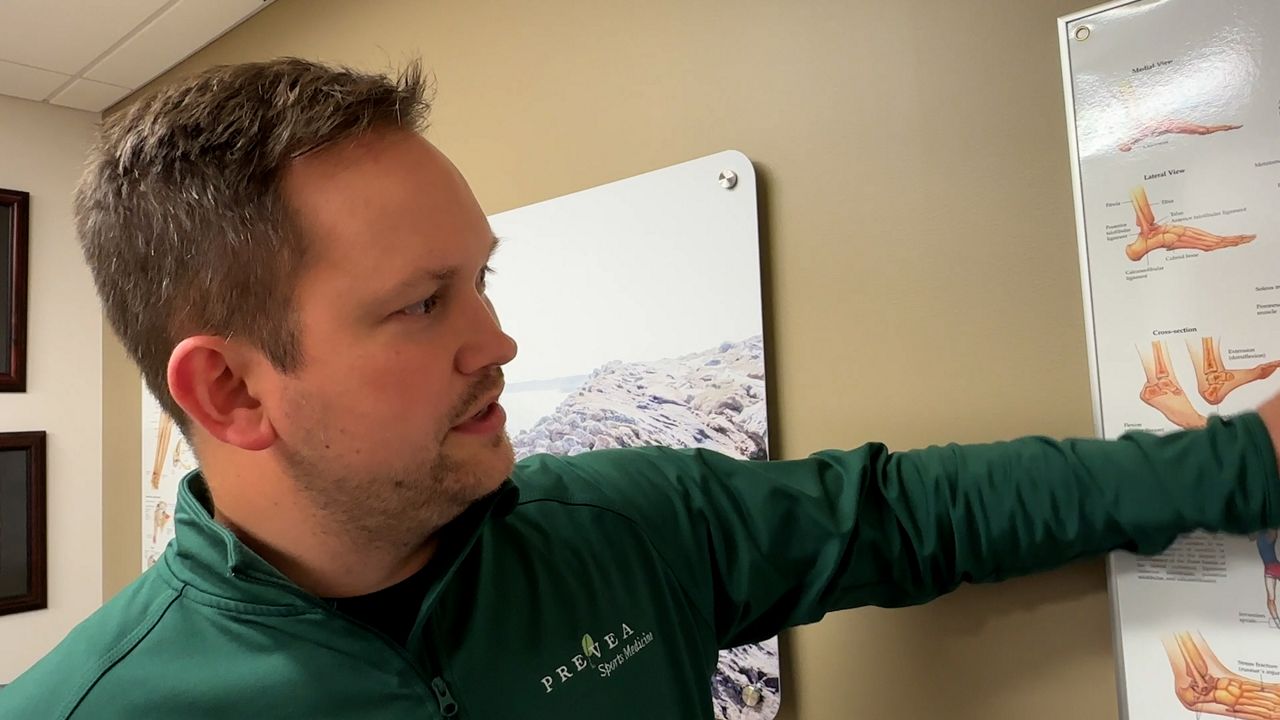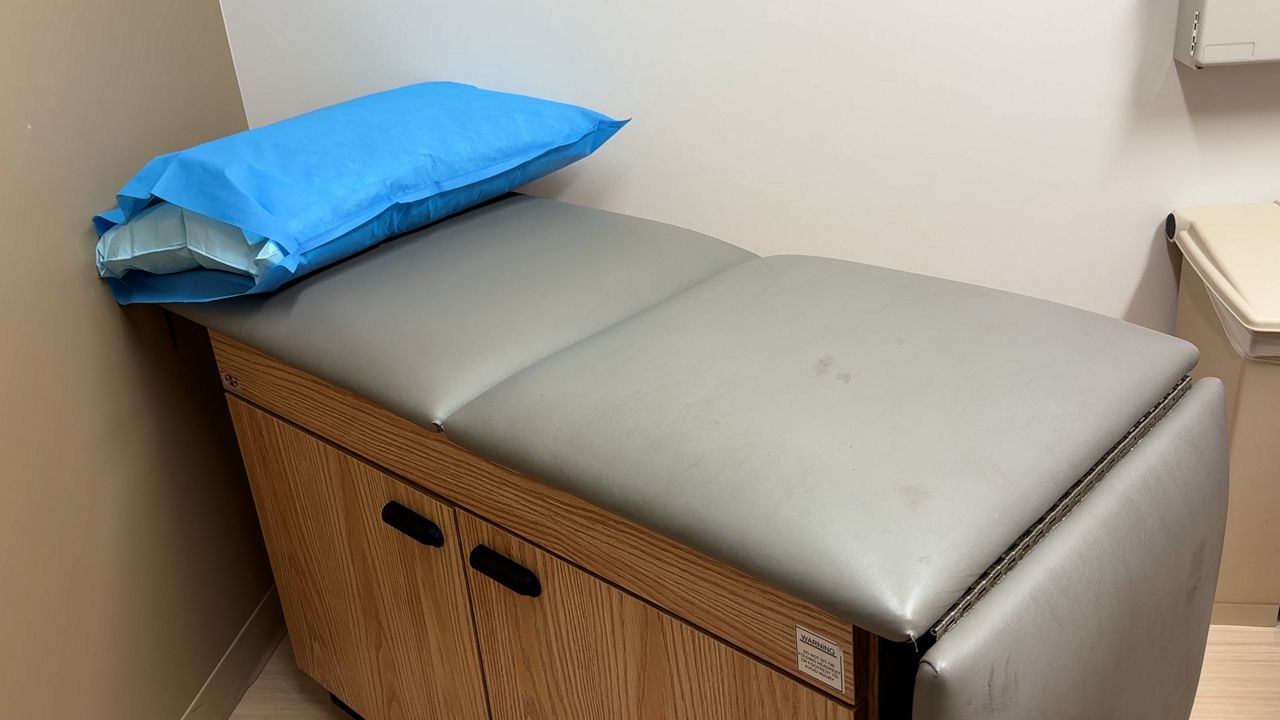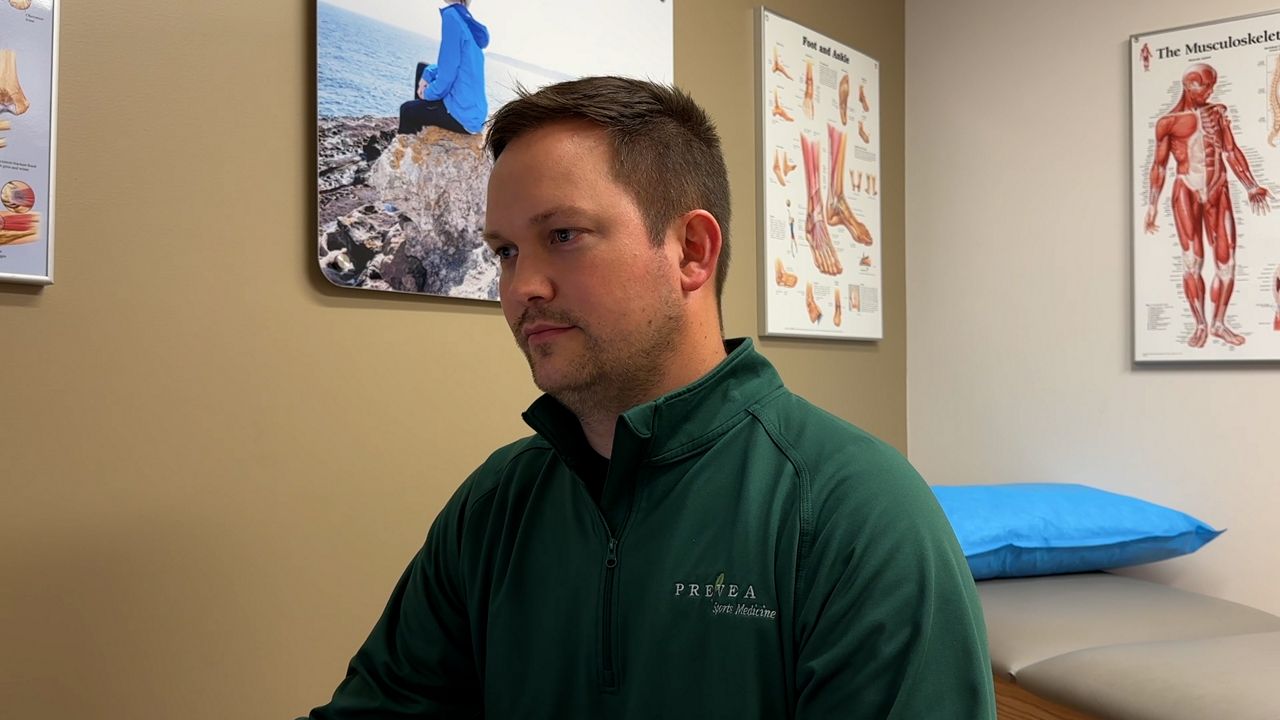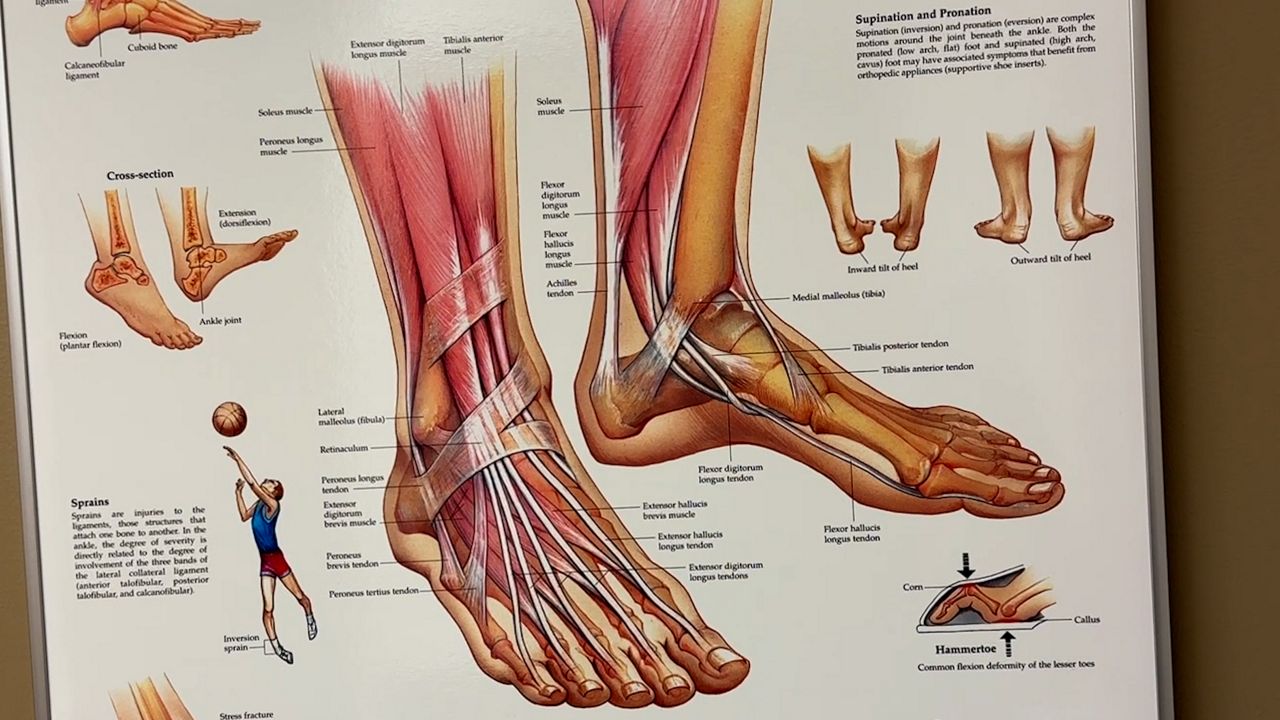GREEN BAY, Wis. — Oshkosh native and Indiana Pacers star Tyrese Haliburton suffered a devastating torn Achilles tendon during Game 7 of the NBA Finals on Sunday night.
Haliburton had been playing with a calf strain in that same right leg. Injuries to that tendon have become increasingly common in professional and recreational athletes.
The Achilles tendon plays an important role in our ability to move around. When it is injured, professionals say the recovery time can be extensive.
Dr. Alan Shamrock is an orthopedic sports medicine and foot and ankle surgeon in Green Bay. Shamrock said the Achilles plays a vital role in our everyday lives.

“The Achilles tendon…is the confluence of two muscles that make up the calf,” said Shamrock. “You have the gastrocnemius in the soleus. They come down, connect, and then form the Achilles tendon that then hooks on to the calcaneus, to the heel bone, and it allows you to get up on the ball of your foot.”
Many professional sports stars have dealt with this injury lately. Close to home, it happened to the Bucks’ Damian Lillard, then the Celtics Jayson Tatum, and finally Haliburton on Sunday—all ending their seasons with torn tendons during the NBA playoffs.
Shamrock said although it is the strongest tendon in the body, that doesn’t mean it is not immune to tearing. Dr. Shamrock said the feeling of it tearing feels like a pop in your heel with swelling, bruising and the inability to walk.

“The classic description of Achilles tendon rupture is feeling like someone kicked you in the back of the heel and then you turn around to look and no one's there,” said Shamrock.
Shamrock said the recovery time for a torn Achilles can be anywhere from nine months to a year to get back to full activity. He said you can treat a tear both with or without surgery, but there are preventative measures you can take.
“I say that the best thing to do is stretch, have a stretching program,” said Shamrock. “You can get one of those with the help of a physical therapist and just do it before you play whatever sport.”

Over his career, Shamrock said the classic patient that has torn their Achilles is a male in their 30s or 40s that takes part in sports recreationally. He stressed it is important to get help immediately if you feel you have injured your Achilles.
“It’s important that we put the foot in an appropriate position as soon as possible to optimize the outcome,” said Shamrock.




